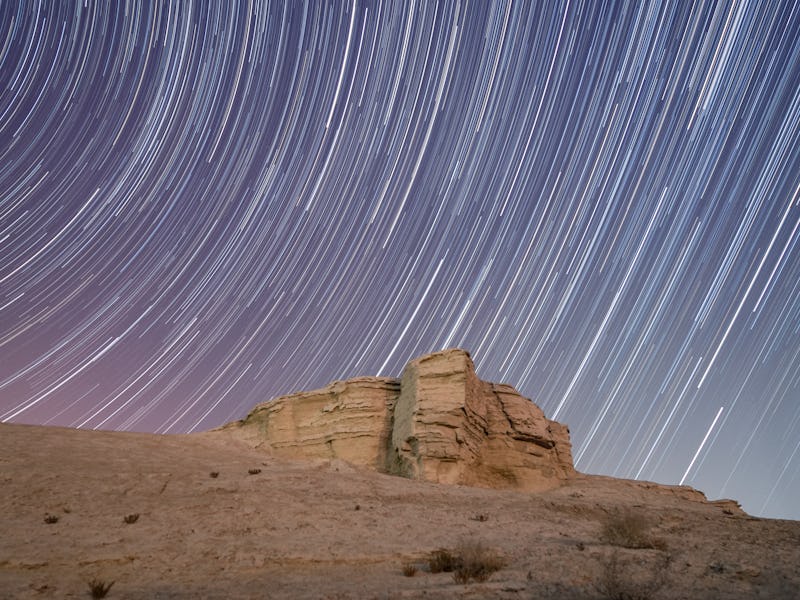Fireballs and Innumerable Meteors: Catch the Quadrantid Meteor Shower Tonight Only
This short-lived meteor shower usually offers bright fireballs and a meteor every minute.

The first meteor shower of 2024 will be at its peak tonight.
The night of January 3 into the early morning of January 4 is pretty much your only chance to catch the Quadrantid Meteor Shower until next year. Most meteor showers offer a few nights of good viewing on either side of their peak, but not the Quadrantids. Although they technically span nearly a month, they’re almost too sparse to notice outside of a few peak hours. Be there or be square!
This meteor shower is short but known for its bright fireballs and its dramatic backstory. Here’s everything you need to know about the 2024 Quadrantid meteors.
A meteor from 2022’s Quadrantids streaks across the sky in China.
When and How to See the Quadrantids
Every year, we begin our new lap around the Sun by passing through the thin trail of dust left behind by asteroid 2003 EH1. The bright “shooting stars” we see in the night sky are actually tiny grains of dust, pattering against Earth’s upper atmosphere like bugs hitting a bug zapper. If you catch the Quadrantids during their short peak, and if the skies are clear, you have a chance to see between 60 and 100 meteors per hour, and some of them could be pretty spectacular.
The Moon will be relatively bright in the night sky; it’s a waning gibbous, which means about half the side of the Moon that faces Earth will be lit. There’s nothing you can do about that, but you can minimize other light pollution by getting yourself away from urban areas and turning off your headlights, flashlights, and phones. Give your eyes about half an hour to adjust to the darkness.
This is definitely a meteor shower for night owls. The best viewing will be in the small hours of the morning before dawn. Meteors will seem to radiate from a spot in the northern sky just below the Big Dipper’s handle — picture a sparser version of the old Microsoft Windows star-field screensaver. But meteors can appear anywhere in the sky, so don’t just stare at the radiant point, or you’ll miss most of the fun.
Where Do the Quadrantids Come From?
If we could zoom out and view the meteor shower from somewhere outside our Solar System, we would see that a narrow trail of dust lies across our path around the Sun, and the Quadrantid meteor shower happens when our planet crosses that trail every year. The dust trail itself is pretty narrow (which is why this shower’s peak is so short), but it's made of relatively large dust particles, which tend to burn up in big, bright flares of light in Earth's upper atmosphere.
But the object that left this narrow dust trail in its wake doesn’t actually cross Earth’s orbit anymore, thanks to a long history of cosmic drama.
Astronomers have traced the Quadrantids to an asteroid called 2003 EH1. Today, the asteroid loops around the Sun in a long, 5.5-year orbit, and although it swoops close to Earth’s orbit, it never actually crosses our path. Sometime in the past, 2003 EH1 seems to have had a close encounter with another object, which shoved the asteroid onto its current orbit and left a mess behind for us to wade through every year.
The real drama happened centuries ago, however. By tracking the orbits and mineral content of 2003 EH1, a comet called 96P/Machholz, and a handful of other objects, astronomers have pieced together their shared, tragic history: Sometime between 100 and 950 CE, while the Roman Empire was rising and falling and the Middle Ages were beginning here on Earth, a huge comet passed too close to the Sun and broke apart. 2003 EH1 seems to be a surviving chunk of that ill-fated comet.
For our enjoyment, we get to watch tiny bits of it burn up in the night sky tonight.